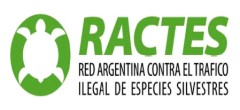
Where the wild things are no more
As the lab grew crowded with the forfeitures and confiscations from each successful prosecution, Washington asked Grosz, promoted by then to assistant regional director of law enforcement for the Fish and Wildlife Service in Denver, to start looking for a warehouse.
'Greed and status," says Grosz, when asked to explain why the trade and market for animal products exist. They're the reasons these items symbolize for him such evil.
The repository was established in 1995 on the site of the Rocky Mountain Arsenal, an Army facility once used for manufacturing chemical weapons. Three years earlier, the U.S. Fish and Wildlife Service began to manage the 17,000-acre site as a wildlife refuge.
There was a time -- 1984, to be exact, in testimony to Congress -- when Grosz argued that the illegal trade could be stopped. Nowadays he isn't so sure.
"Given the poverty and the corruption that exist in other parts of the world, there will always be pressure to resort to the illegal wildlife trade," he says. "People have to eat. When people are hungry, this is what they do."
Located on a knoll surrounded by rolling hills of newly restored grasslands, the wildlife repository shares space with the National Eagle Repository, which distributes portions of deceased bald and golden eagles, mostly feathers, to Native Americans.
Building No. 128 is made of cinder blocks and metal siding. The warehouse is nearly as long as a football field and half the width. The floor plan is simple: a walk-in freezer, rows of industrial shelving and a storage system that offers security and climate control for valuable and perishable items. The antiques from Detroit will find a place in the locked cabinet opposite the elaborately carved elephant tusks.
The repository has something of a hallowed reputation among Fish and Wildlife agents. Some have visited. Others know it only by reputation. All view it as essential and invaluable.
Nationwide there are 199 Fish and Wildlife special agents, responsible for investigating illegal trade and the deaths of protected species, and 115 wildlife inspectors, who focus on import and export regulations. (In Southern California, there are six agents and 13 inspectors.)
Given these numbers, it's not surprising that most agents estimate that only one-tenth of 1% of the illegal wildlife brought into the country is intercepted.
'Everything is vulnerable," said Bernadette Atencio, supervisor of the repository, when asked to look beyond particular laws and explain the meaning of this place.
Civilian visitors most often ask whether everything here is real. Stripped from the context of their lives, instincts and behaviors defined by environment, these animals are caricatures, soulless representations of their former selves.
Spend time inside this ark and you confront one of mankind's deepest atavistic streaks, an instinct as old as fire. Here on shelves stuffed with pelts, piled with shoe boxes or crammed with bitter smelling medicines, is proof of an unstoppable obsession with capturing and owning the wild.
There are pills and plasters for potency, coats and belts for allure, and novelty items for some social cachet.
Each is a totem, an evolutionary holdover, from a time when we sought dominion over the world and magic from its creatures.
But what once was a primitive painting on the wall in a cave is now a sophisticated and cruel industry that is slowly changing life on this planet. Here in a mere box or a plastic bag, you will find a flock of birds, a school of fish, a herd of mammals.
In single cases, agents have confiscated 26,000 sea horses, 428 queen conch shells, 985 Saiga antelope horns, 272 bull shark jaws, 88 tree snail shells, 40 leopard skins, 100 monocled cobra snake vertebra bracelets, 175 mounted cobras, 15 urns made from chambered nautiluses.
Scientists in the last few years have begun floating estimates of how many animal and plant species will be heading toward extinction by 2050. Some say between 15% and 37%, a quantity high enough for this period of time to be called the Sixth Extinction since life emerged on Earth.
Naturalist E.O. Wilson has suggested that when the current epoch -- the Age of Mammals, or Cenozoic -- is over, the new era should be called the Eremozoic, its Greek prefix denoting loneliness.
Although global warming and pollution are playing a role in this trend, Grosz knows firsthand the heavy toll that the wildlife trade has taken.
Now retired and writing books about his experiences with the agency, he often resorts to metaphors of war (". . . there will not be a lot of animals out there if we're not able to hold the line . . .") and a surprising degree of tenderness when describing the losses.
"Wildlife dies without a sound," he says. "We're the only guys who can give them a voice."
Outside of the repository, a robin huddles in a small nest. A bull snake winds across a road. Mallards sleep on an empty boardwalk. Cormorants take fight, and Canada geese poke among the grass near the shallows.
The Age of Loneliness seems to have taken hold. Wind gusts across the plains, and in the distance, the skyline of Denver is dwarfed by the snow-capped Rockies.
Fuente: June 18 2009 - Los Angeles Times





No hay comentarios:
Publicar un comentario